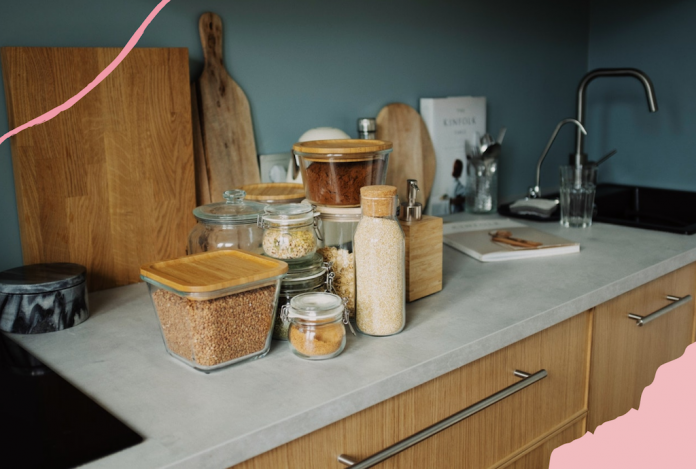We’ve all been there: opening the fridge to find wilted lettuce, discovering potatoes sprouting in the cupboard, or realising that expensive piece of cheese has developed an unwelcome fuzzy coating. Despite our best intentions, home kitchens often feel like battlegrounds against spoilage, where fresh ingredients seem to deteriorate faster than we can use them.
Yet professional kitchens across Britain operate with military precision, making ingredients stretch for days or even weeks. Head chefs inspect deliveries, sous chefs rotate stock, and commis chefs prep ingredients that must stay fresh for service hours later. Behind the theatrical flames and knife skills that make cooking shows compelling lies a less glamorous but equally crucial skill: making ingredients last.
While restaurants operate with razor-thin margins and minimal food waste, many home kitchens struggle with ingredients that seem to spoil faster than they can be used. The difference isn’t just about quantity—it’s about technique. Professional chefs have developed time-tested methods that can dramatically extend the life of your weekly shop. Here are ten time-tested techniques that top chefs swear by—and how you can adapt them for your own kitchen.
Master The Art Of Proper Storage Temperatures
Professional kitchens don’t just chuck everything in the fridge and hope for the best. Different ingredients have different optimal storage temperatures, and chefs know them by heart. Your fridge should be set to 3-5°C, but within that space, create microzones: store dairy on the middle shelves where temperature is most consistent, keep herbs and delicate greens in the crisper drawers with high humidity, and reserve the door (the warmest spot) for condiments and preserves only.
Potatoes, onions, and garlic belong in cool, dark cupboards—never the fridge, where their starches convert to sugars and textures turn unpleasantly mealy.
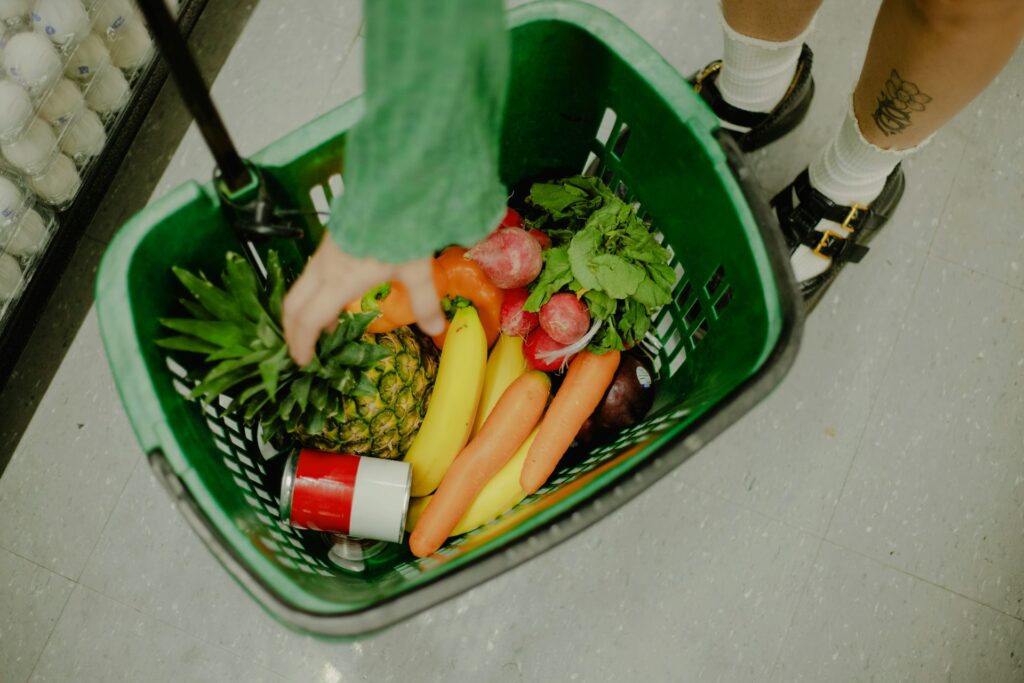
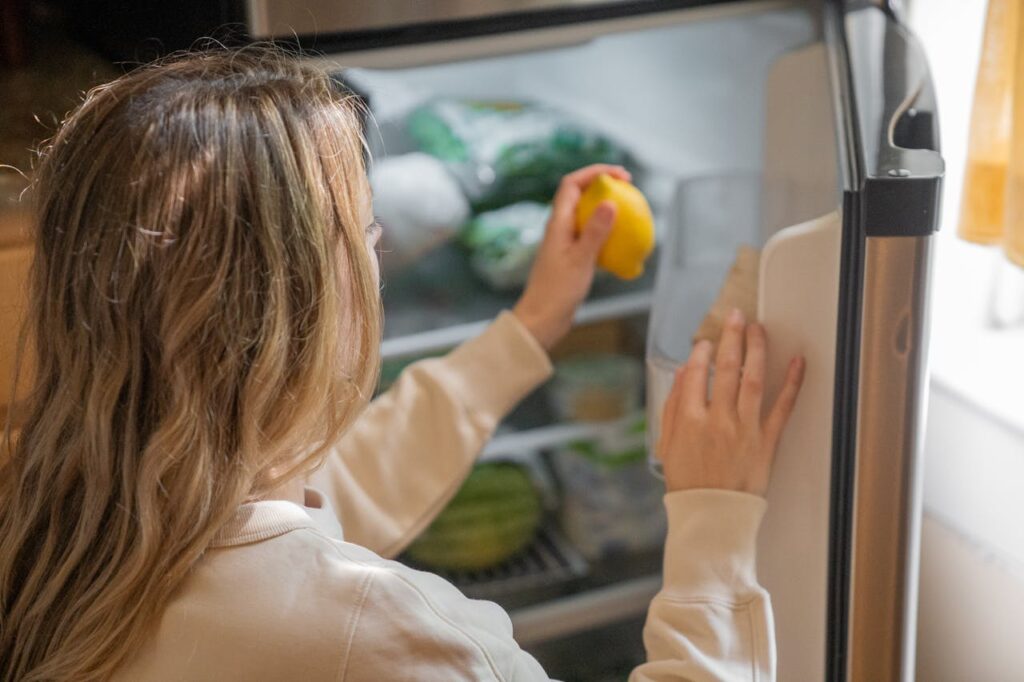
Embrace The FIFO Philosophy
‘First In, First Out’ isn’t just restaurant jargon—it’s a way of life. Professional kitchens label everything with dates and systematically use older stock first. At home, this means resisting the urge to grab the milk from the front of the fridge or the pasta from the top of the cupboard. Rotate your stock like a pro: new purchases go to the back, older items move forward. It sounds tedious, but it becomes second nature quickly and dramatically reduces waste.
Invest In Quality Storage Containers
Whilst restaurants rely on industrial cambro containers, you don’t need commercial equipment to think like a professional. Airtight containers are your best friends—they prevent moisture loss, protect from contamination, and stack efficiently. Glass containers with tight-fitting lids work beautifully for leftovers and prepped ingredients. For pantry staples like flour, rice, and cereals, transfer them from their original packaging into airtight containers immediately after purchase.
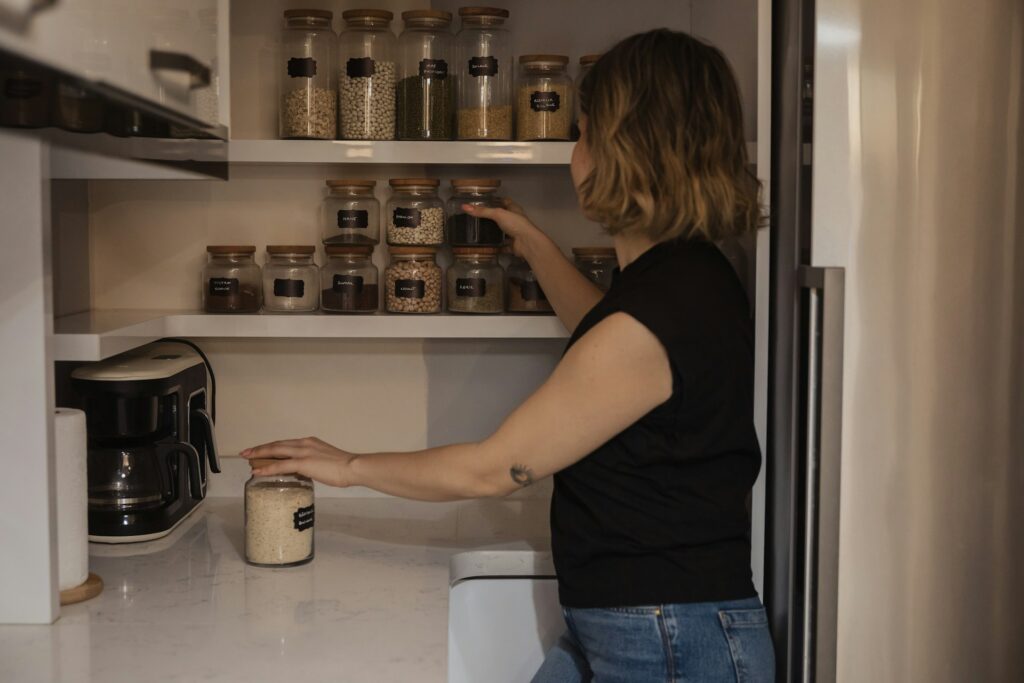

Perfect Your Blanching & Shocking Technique
Here’s where home cooks can truly level up. Professional kitchens blanch vegetables not just for immediate service, but for storage. The process—briefly boiling vegetables then plunging them into ice water—partially cooks them whilst preserving colour, texture, and nutritional value. Blanched vegetables can be stored in the fridge for 3-4 days and finish cooking in minutes.
Try this with green beans, broccoli, asparagus, or Brussels sprouts. Blanch until just tender-crisp, shock in ice water, drain thoroughly, then store in airtight containers for up to 3-4 days. You’ll have restaurant-quality vegetables ready in moments.
Understand The Science Of Ethylene Gas
Professional kitchens separate their produce storage for good reason. Some fruits and vegetables produce ethylene gas as they ripen, which accelerates the aging process in other produce. Bananas, apples, avocados, and tomatoes are major ethylene producers, whilst leafy greens, herbs, and root vegetables are particularly sensitive to it.
Store ethylene producers separately, ideally in perforated bags that allow gas to escape whilst maintaining humidity. Keep sensitive items well away from these natural aging accelerants.

Plan Your Chilled Transport Strategy
The journey from shop to home is where many ingredients begin their decline. Professional kitchens understand that the chilled transport of ingredients is crucial—deliveries arrive in refrigerated lorries, and items move quickly into proper storage. You can apply this principle by bringing insulated bags or a cool box for grocery shopping, especially during warmer months or longer trips.
Plan your shopping route to collect chilled and frozen items last, and get them home and properly stored as quickly as possible. Those extra twenty minutes in a warm car boot can cost you days of freshness.
Prep Smart, Store Smarter
Professional kitchens prep ingredients in advance, but they’re strategic about what gets prepped when. Some ingredients actually last longer when prepped (washed salad leaves, for instance), whilst others deteriorate quickly once cut (mushrooms and potatoes turn brown rapidly).
Wash and thoroughly dry lettuce and herbs when you get home, then store them wrapped in kitchen paper inside airtight containers. Conversely, only cut mushrooms, avocados, and apples just before use, or treat cut surfaces with lemon juice to prevent oxidation.
Consider quick pickling vegetables that are approaching their peak—professional kitchens often transform aging vegetables into pickled garnishes that last weeks rather than days. A simple brine of equal parts water and vinegar with a tablespoon of salt and sugar can breathe new life into cucumbers, radishes, carrots, or even slightly soft onions. These quick pickles are ready within hours and keep in the fridge for up to a month.
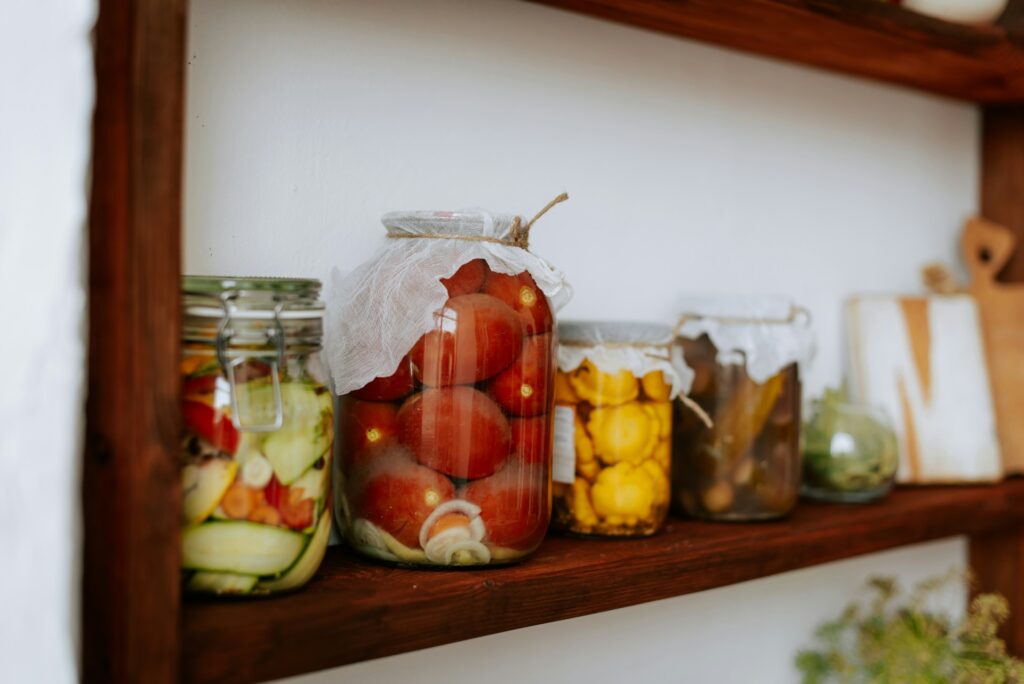
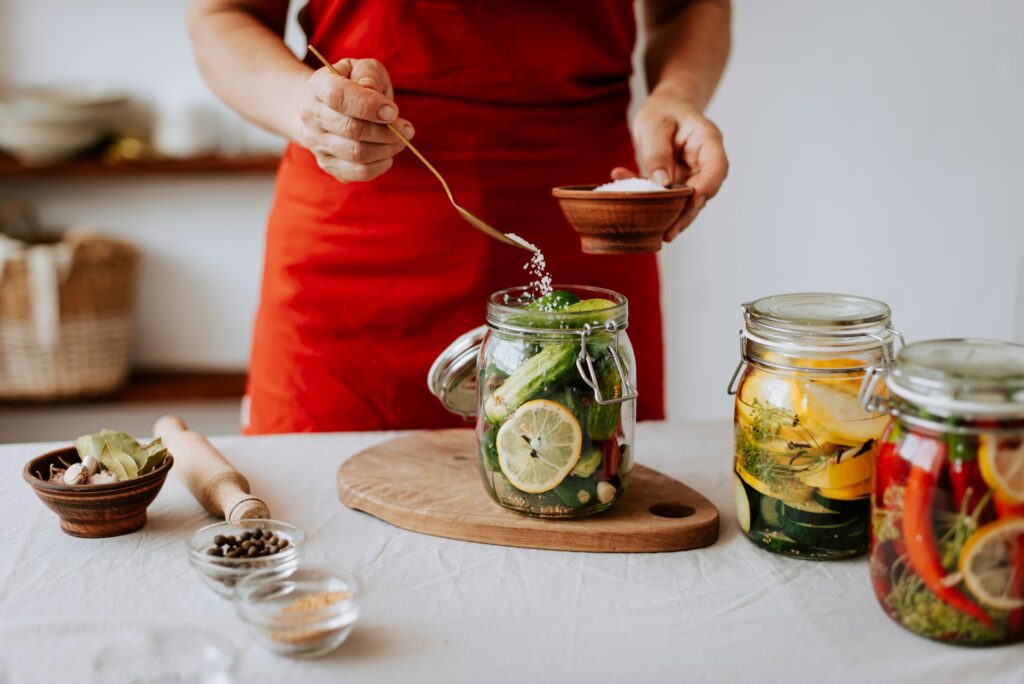
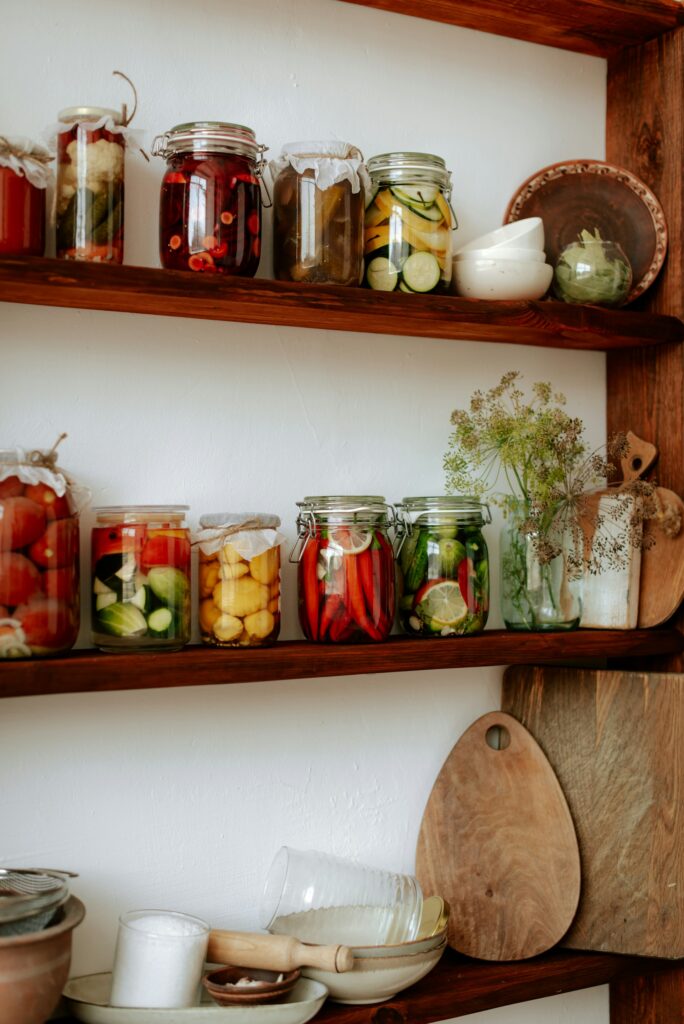
Another professional technique is confiting vegetables in oil—slowly cooking garlic cloves, cherry tomatoes, or root vegetables in olive oil at low temperatures creates intensely flavoured ingredients that keep for weeks in the fridge, submerged in their cooking oil. These oil-preserved vegetables add instant depth to pasta dishes, salads, and grain bowls.
Similarly, transform wilting herbs and leafy greens like rocket into pestos—blending them with oil, nuts, and cheese creates vibrant sauces that preserve the essence of these delicate ingredients for weeks. Professional kitchens regularly turn aging basil, parsley, or even carrot tops into versatile pestos that can elevate simple dishes long after the original leaves would have spoiled.
Control Humidity Like A Professional
Restaurant walk-in coolers maintain precise humidity levels, and you can create similar conditions at home. Most modern fridges have humidity-controlled crisper drawers—use the high humidity setting for leafy greens and herbs, low humidity for fruits. If your fridge lacks these controls, create your own: store leafy vegetables in perforated bags with damp kitchen paper, and keep fruits in ventilated containers.
For herbs, treat them like flowers: trim the stems and store upright in glasses of water, covering the leaves with plastic bags secured with rubber bands.
Read: The 10 essential food hygiene commandments of professional kitchens
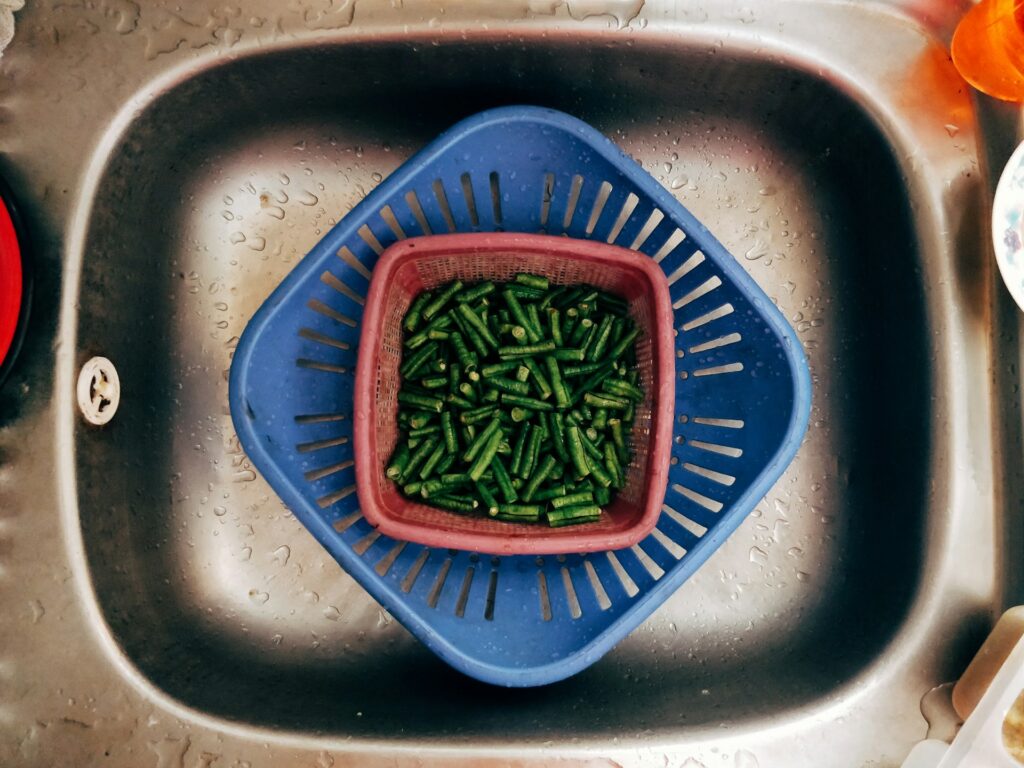
Freeze Strategically, Not Desperately
Professional kitchens freeze ingredients at their peak quality, not as a last resort when they’re about to turn. Freeze herbs in ice cube trays with olive oil or butter, portion meat and fish into meal-sized quantities before freezing, and blanch vegetables before freezing to maintain quality.
Label everything clearly with contents and dates—frozen food doesn’t last forever, and mystery packages lead to waste. Most vegetables maintain quality for 8-12 months frozen, whilst meat and fish are best used within 3-6 months.
Learn To Read The Signs
Perhaps most importantly, professional chefs know how to assess ingredient quality beyond sell-by dates. They look, smell, and sometimes (with safety in mind first, of course) taste to determine freshness. Sell-by dates are conservative estimates—many ingredients remain perfectly good well beyond these dates if properly stored.
Learn to trust your senses: fresh fish should smell like the ocean and not ‘fishy’, vegetables should feel firm with vibrant colours; dairy products should smell clean and sweet. When in doubt, remember that most spoiled food makes itself quite obvious through smell, texture, or appearance
The Bottom Line
The real secret behind a professional kitchens’ success with ingredient longevity isn’t any single technique—it’s the mindset. Every ingredient represents an investment, and waste is simply unacceptable. They plan purchases carefully, store everything optimally, and use ingredients systematically.
You don’t need a commercial kitchen to adopt this approach. Start with one or two techniques that appeal to you, then gradually incorporate others. Soon, you’ll find yourself thinking like a chef: seeing potential in every ingredient, planning ahead, and treating your kitchen stores with the respect they deserve.
Your wallet—and the planet—will thank you for it.





